Okinawa Monorail
another Monorail Society
Exclusive!
Page Two of Six
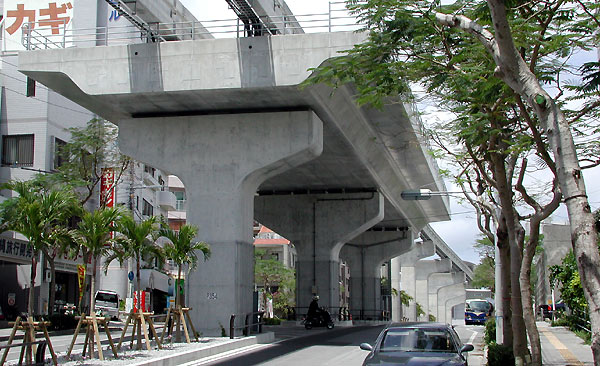
Rounded edges are part of the design of this switch platform.
Also visible here is our first peak at one of the ways landscaping
is already maturing under the tracks. One of the unique challenges
for engineering structures in Okinawa is weather. Typhoons and
high winds slam the island every year. Salt water corrosion is
also a factor that engineers had to contend with. The supports
for the trees are seen all over Japan and are there for typhoons.
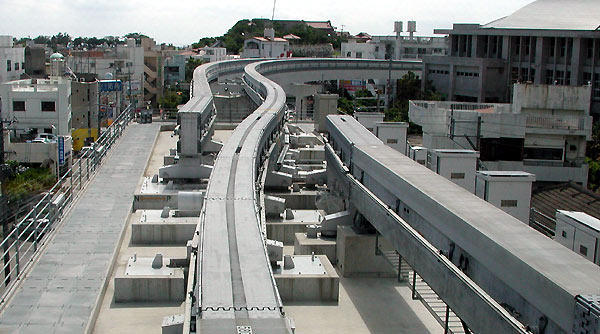
Up on the platform, this switch is currently set for crossover.
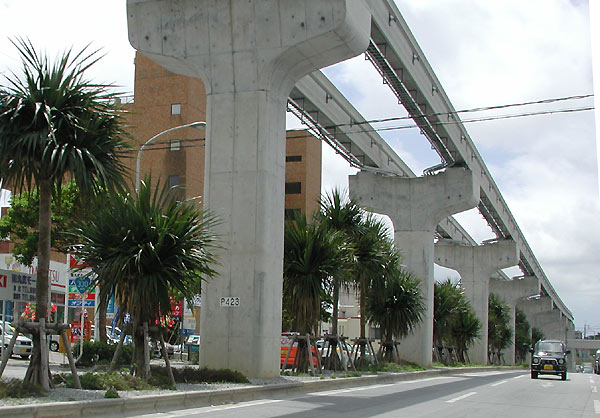
The sun is out for this picture. Look at the not-very-imposing
shadow that monorail casts upon the street below!
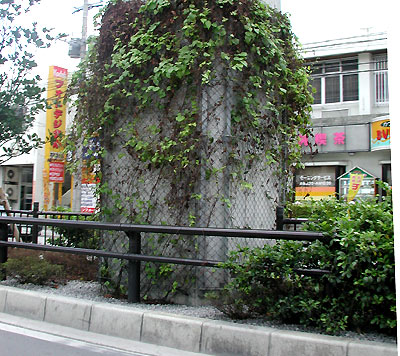
Using a technique pioneered at Anaheim in 1959, vines are planted
and encouraged to climb some pylons. Looks like a good amount
of growth for a monorail that isn't even open yet.
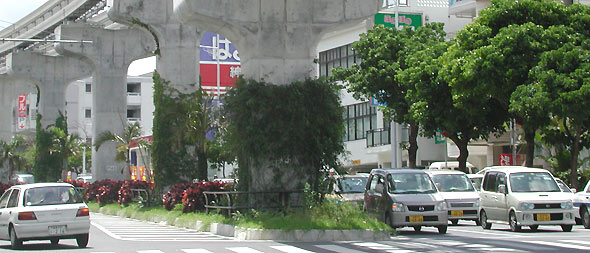
More beautiful landscaping
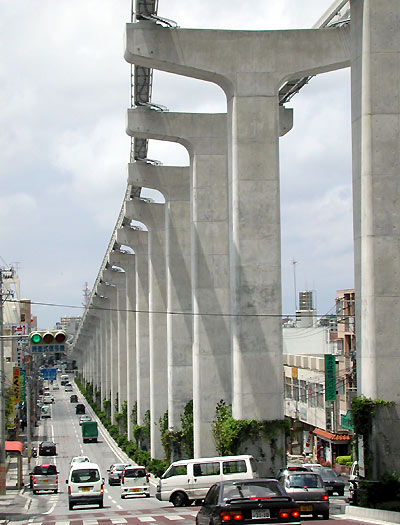
At the northeast end of the line, the monorail climbs the foothills
of the city. Some of these pylons are 20 meters high, some of
the tallest in the world. The grade reaches 6% during the hill
climb. While this telephoto image gives the impression of a wall
of concrete, the effect in person is quite different. The long
distances between pylons as well as the high altitude of the track
reduce the impact on those at street level and in nearby buildings.
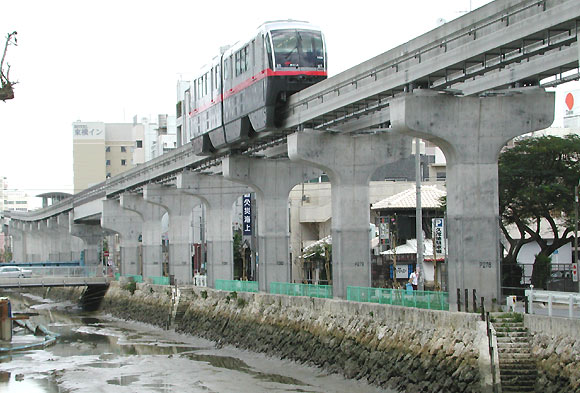
Working our way back towards the airport we jumped out of the
taxi again for another view of one of the two-car monorail trains
following the canal. A one-way ride takes 27 minutes. Next
Page...
Okinawa Monorail - Photo Essay page ONE / TWO / THREE / FOUR / FIVE / SIX
 / back to the Special Features Page / back to the Special Features Page |